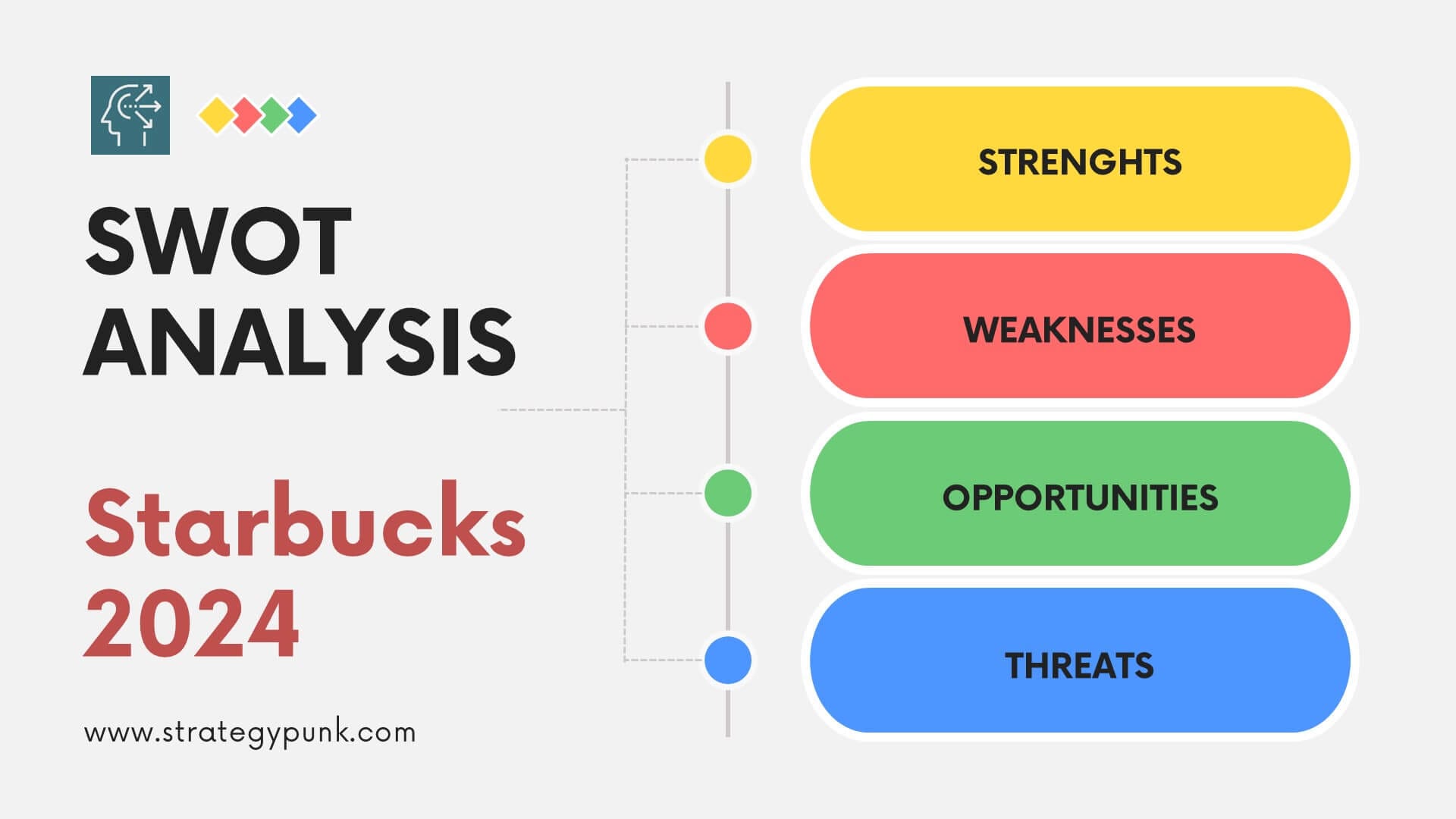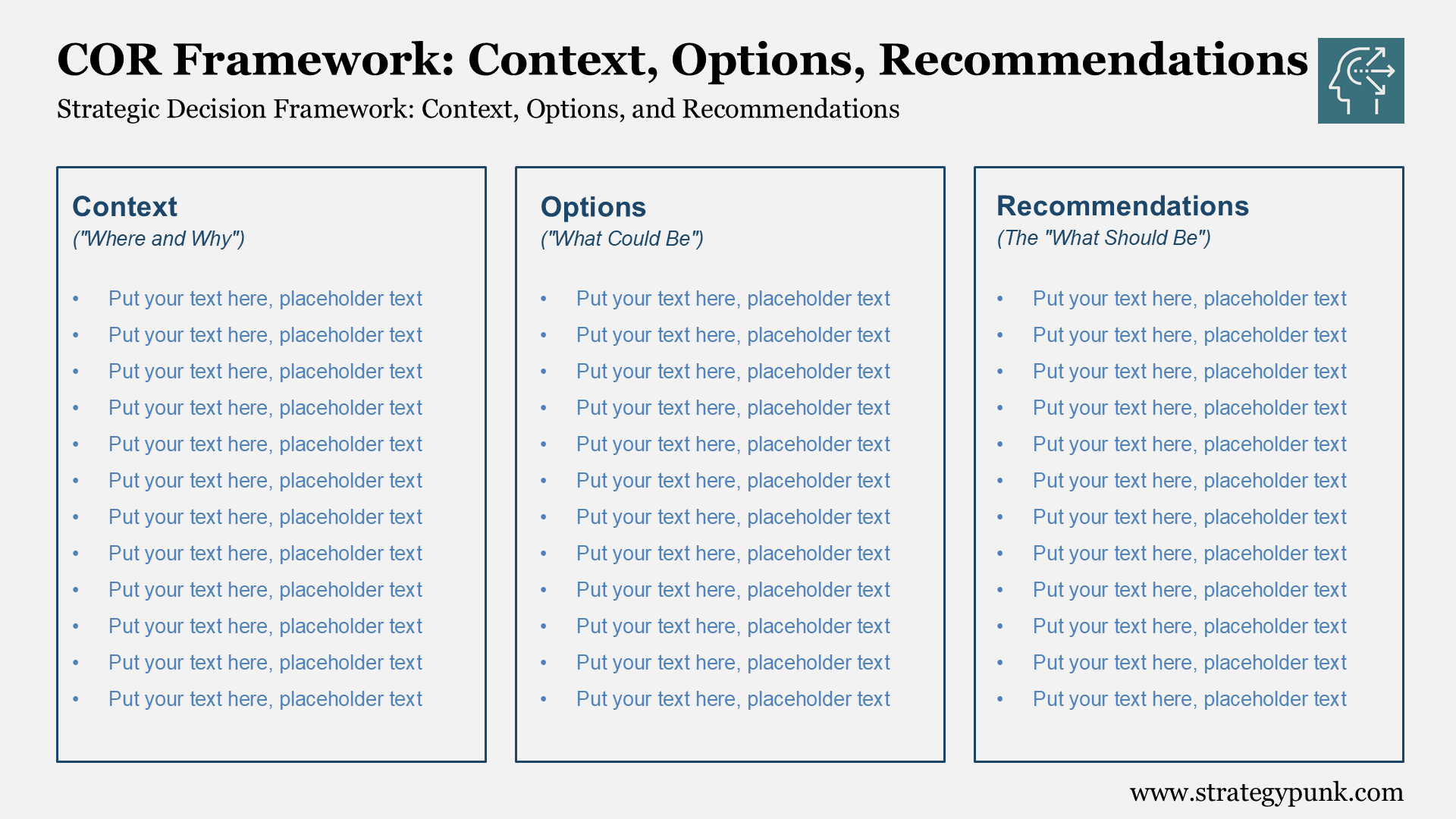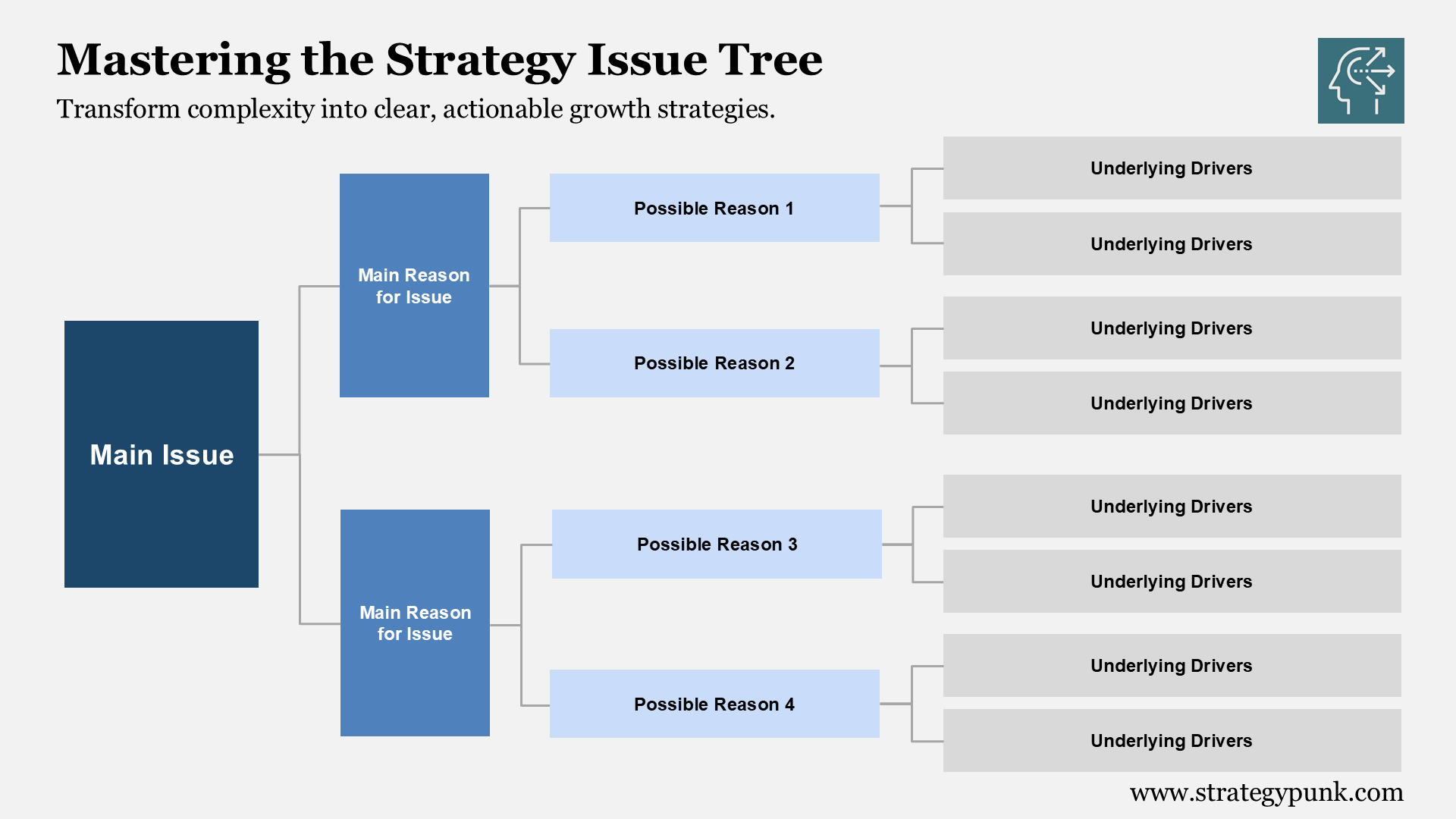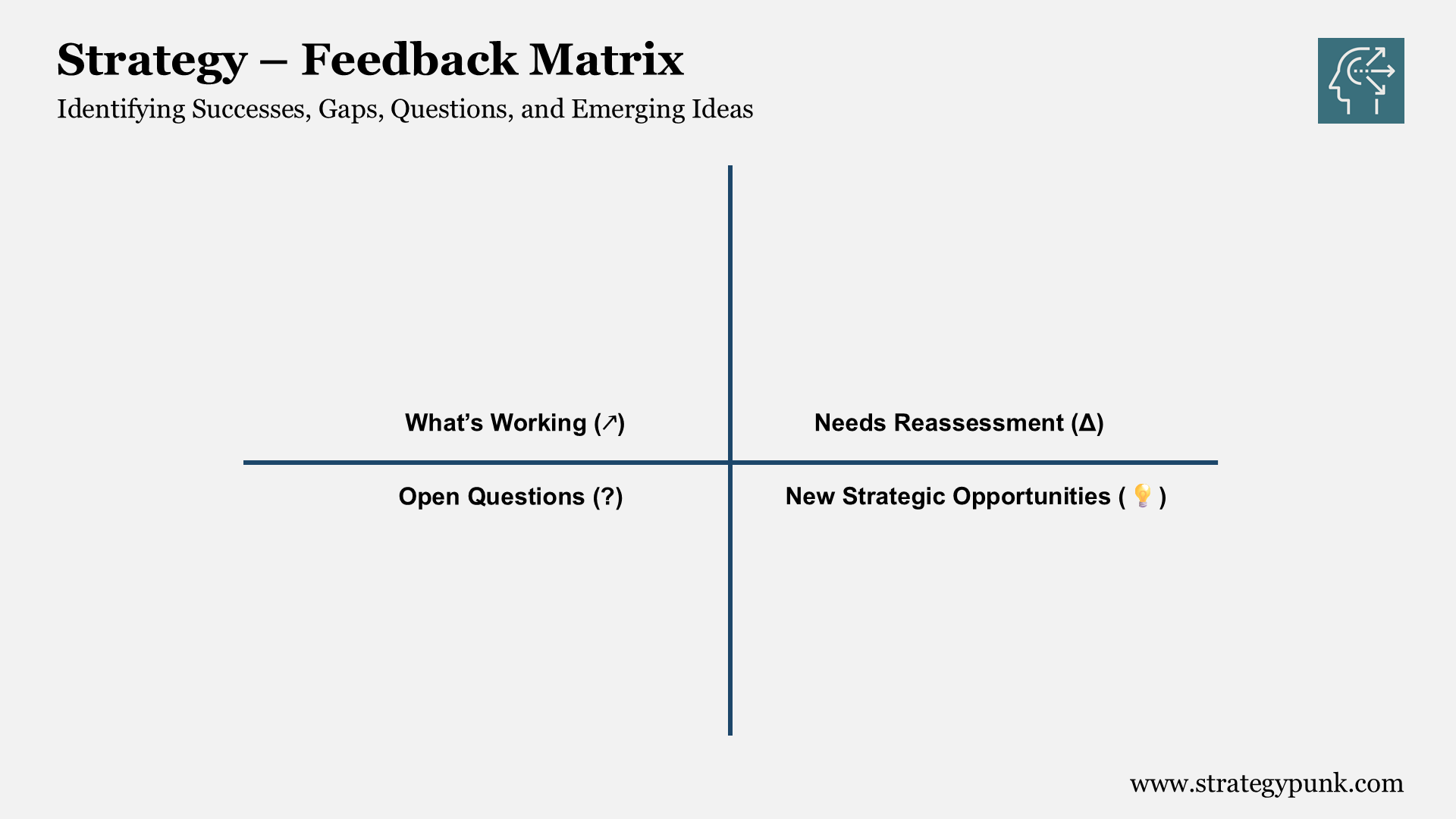SWOT Analysis of Starbucks: Free Templates and In-Depth Insights 2024
Delve into Starbucks' SWOT Analysis with our detailed guide. Explore their strengths, weaknesses, opportunities, and threats. Download our free, editable PowerPoint template to visually represent Starbucks' strategic position.

Introduction
Starbucks is one of the most iconic and globally recognized brands. Founded in Seattle in 1971, it has grown to become the world's largest coffeehouse chain, with over 34,000 stores worldwide.
As a pioneer of the coffeehouse experience, Starbucks has played a vital role in shaping consumer culture and transforming the way people consume coffee. The company's focus on premium products, customer experience, and corporate social responsibility has enabled it to build a strong brand image and loyal customer base over the past five decades.
Starbucks faces competition from lower-priced coffee chains, independent coffee shops, and fast-food restaurants. Shifting consumer preferences, market saturation in the US, and emerging economic challenges also impact its future outlook.
Conducting a SWOT analysis is an effective way to evaluate Starbucks' strategic position in the specialty coffee industry. Examining the company's strengths, weaknesses, opportunities, and threats provides insights into Starbucks' capabilities, vulnerabilities, and growth potential.
This article provides an in-depth SWOT analysis of Starbucks in 2024. We will analyze Starbucks' business model, financial performance, brand image, growth strategies, and how it is positioned to respond to market trends and competitive forces.
Download our free editable PowerPoint template to visualize Starbucks' SWOT analysis. Let's get started!
A Brief Look at the History of Starbucks
Starbucks was founded in 1971 by Jerry Baldwin, Zev Siegl, and Gordon Bowker as a local coffee bean roaster and retailer in Seattle. The company was inspired by entrepreneur Alfred Peet, whom the founders personally knew, to sell high-quality coffee beans and equipment.
The name "Starbucks" comes from a character named Starbucks in the novel Moby Dick. The founders wanted a name that evoked the romance of coffee and the maritime history of coffee trading. In its early days, Starbucks only sold roasted coffee beans, not brewed coffee or espresso drinks. The first Starbucks cafe serving espresso opened in 1984.
Howard Schultz joined Starbucks as Director of Marketing in 1982 after being impressed by the company's knowledge and passion for coffee during a sales call. In 1983, after a trip to Italy, where he experienced the country's coffeehouse culture, Schultz convinced the founders to test the cafe concept.
Schultz left Starbucks in 1985 to start his coffee business, Il Giornale. In 1987, Schultz acquired Starbucks for $3.8 million and transformed it into a national coffeehouse chain by aggressively opening new stores. Starbucks went public in 1992.
Under Schultz's leadership, Starbucks pursued rapid expansion through company-owned and licensed stores in the 1990s and 2000s. The company popularized the cafe experience and specialty coffee drinks like lattes, cappuccinos, and Frappuccinos.
Today, Starbucks has over 34,000 stores worldwide and annual revenues of $29 billion. It sells various coffee and tea beverages, food items, packaged goods, and merchandise. Starbucks established itself as one of the world's most valuable brands by pioneering the coffeehouse concept and fueling the specialty coffee movement.
Financials of Starbucks 2023
Starbucks continued its growth trajectory in the fiscal year 2023, achieving significant financial milestones:
- Revenue: $35.98 billion, a 12% increase from the previous year.
- Net Income: $4.13 billion, a 26% increase from the previous year.
- Number of Stores: 36,171 globally, expanding its presence with 1,854 net new stores during the year.
This expansion includes opening the first store in Guyana on April 25, 2023. Wikipedia
Increased customer traffic, higher average ticket sizes, and strategic store openings drove Starbucks' growth. The company maintained a strong cash position, ending the year with $3.6 billion in cash and investments.
In 2023, Starbucks returned $5.5 billion to shareholders through dividends and buybacks, reflecting its commitment to delivering value to investors. The company also reported a 7% increase in comparable store sales globally, led by a 9% increase in the U.S. market.
Operating margin expanded by 150 basis points to 17.1%, indicating improved operational efficiency. Starbucks Rewards membership grew to 30.4 million active members, up 13% year-over-year, demonstrating strong customer loyalty.
Digital sales reached $8.7 billion, accounting for 26% of U.S. company-operated sales, highlighting the importance of digital engagement in driving sales. These achievements underscore Starbucks' effective execution of its growth strategy and ability to adapt to changing market dynamics.
In-depth SWOT Analysis of Starbucks 2024

Starbucks' Strengths
- Strong brand image and customer loyalty: Starbucks has built an iconic brand and loyal customer base through its premium products, customer experience, and storytelling. Customers value the Starbucks Experience.
- Largest coffeehouse chain globally: With over 34,000 stores worldwide, Starbucks has unmatched scale, reach, and brand visibility compared to competitors. Its extensive store network creates consistent brand experiences.
- Digital leadership: Starbucks is a leader in mobile ordering, payment, and loyalty programs. Its world-class mobile app drives customer engagement and repeat purchases.
- Product innovation capabilities: Starbucks continually introduces new coffee, espresso, tea beverages, and food offerings. It is also an expert in LTOs and customization.
- High employee satisfaction: Starbucks provides above-average compensation and benefits, which drives lower turnover rates and more engaged staff compared to peers. Its focus on talent development strengthens capabilities.
Starbucks' Weaknesses
- Saturation in the US market: With over 15,000 US stores, Starbucks faces cannibalization across its extensive store footprint. New store growth is focused on emerging markets.
- High operating costs: Operating expenses related to real estate, labor, and raw materials are increasing, putting pressure on store-level profitability. Pricing power is limited.
- Low presence in India and the Middle East: Starbucks has not gained a significant market share in these regions compared to competitors like Costa Coffee and Caffe Nero.
- Dependence on the US for revenue: The US accounts for over 65% of Starbucks' revenue, making it vulnerable to saturation and economic downturns in this vital market.
Starbucks' Opportunities
- Growing demand in China and the Asia Pacific: China is Starbucks' fastest-growing market, with over 5,500 stores. Expanding its footprint in India, Indonesia, and Vietnam offers significant growth potential.
- New store formats: Smaller footprint stores like Starbucks Pickup and curbside locations provide expansion opportunities in saturated markets like the US.
- Product innovation: Cold beverages, health-focused offerings, premium food, and sustainability-marketed products can attract new customers.
- Digital innovation: Enhancing mobile ordering/payment, delivery, and personalization can boost engagement and sales. Virtual experiences also expand brand reach.
Starbucks' Threats
- Rivalry from low-cost coffee chains: Chains like Dunkin' Donuts, McDonald's, and Tim Hortons offer cheaper coffee, intensifying competition for value-focused consumers.
- Independent coffee shops: Local/artisanal coffee shops appeal to consumers who prefer an indie brand experience over a global chain.
- Rising costs: Inflation, supply chain disruptions, and commodity price volatility increase operating costs. Starbucks faces pressure to raise prices, which will impact demand.
- Recession risks: An economic downturn would impact discretionary spending. Starbucks' premium pricing makes it vulnerable to consumer trading down.
Starbucks SWOT Analysis Summary

Internal Factors
Strengths
- Strong brand image and loyalty
- Largest coffeehouse chain globally
- Digital leadership
- Product innovation capabilities
- High employee satisfaction
Weaknesses
- Saturation in the US market
- High costs of operation
- Low presence in India and the Middle East
- Dependence on the US for revenue
External Factors
Opportunities
- Growing demand in China and the Asia Pacific
- New store formats
- Product innovation
- Digital innovation
Threats
- Rivalry from low-cost coffee chains
- Independent coffee shops
- Rising costs
- Recession risks
Frequently Asked Questions
What are Starbucks' most significant strengths?
Starbucks' biggest strengths are its strong brand image and customer loyalty, unmatched global scale (over 34,000 stores worldwide), digital leadership through its world-class mobile app, and capabilities for continuous product innovation.
What are the key weaknesses or issues facing Starbucks?
Starbucks must address the following weaknesses: saturation and cannibalization in the US market, high operating costs, low market share in some emerging markets like India, and overdependence on the US for sales.
What are the significant growth opportunities for Starbucks?
Significant growth opportunities include expanding in high-potential markets like China, India, and Southeast Asia, rolling out smaller store formats in saturated markets, product and digital innovation, and sustainability-driven offerings.
What are the biggest threats to Starbucks' future growth?
Key threats Starbucks faces are low-priced rivals like Dunkin' and McDonald's, competition from independent coffee shops, inflation, rising costs, and the risk of consumers trading down during a recession.
What is Starbucks' target market?
Starbucks primarily targets affluent, well-educated, urban consumers aged 25 to 40. Its target customers include college students, professionals, and dual-income families. By targeting this premium demographic, Starbucks positions itself as an aspirational lifestyle brand.
How many employees does Starbucks have?
As of October 2022, Starbucks had approximately 383,000 employees worldwide, including 238,000 in the US. The majority (around 70%) are hourly retail store employees known as "partners."
Where does Starbucks source its coffee beans from?
Starbucks sources Arabica coffee beans from over 30 countries across Africa, Asia Pacific, and Latin America. Its largest suppliers are Brazil, Colombia, Indonesia, and Africa. Sourcing high-quality Arabica beans enables Starbucks to offer premium blends.
Does Starbucks franchise its stores?
Starbucks operates over 10,000 licensed stores globally, representing around 30% of its locations. Starbucks licenses its brand name, products, and business model for licensed stores to a third-party operator who owns and runs the store.
What are Starbucks' most popular drinks?
Some of Starbucks' top-selling drinks include Pumpkin Spice Latte, Iced Coffee, Caramel Macchiato, White Chocolate Mocha, and Caffe Mocha. Cold coffee drinks like iced lattes and Frappuccinos are growing in popularity.
Starbucks SWOT Analysis PowerPoint Template
free and fully editable PPT Template
Starbucks' substantial brand equity, customer loyalty, and innovation capabilitiesempower it to keep growing despite emerging challenges like market saturation, cost pressures, and economic uncertainty.
Leveraging strengths in mobile technology, sustainability, and global scale can help Starbucks capitalize on significant growth opportunities in markets like China and product segments like cold beverages.
Addressing weaknesses around costs, US dependence, and competition will also be imperative for long-term success.
This SWOT analysis provides an in-depth look at Starbucks' strategic position.
The free PowerPoint template can help visualize and communicate Starbucks' SWOT assessment insights. Let us know if you have any other questions!
Starbucks SWOT Analysis PowerPoint Template
Starbucks SWOT Analysis PDF Template
Discover more
Clickworthy Resources
New! SWOT Framework & Free PPT Template - 2024 Edition
Dive into the 2024 Edition of our SWOT Analysis guide, complete with a free PowerPoint template. This resource covers the essentials of conducting a SWOT analysis, its benefits, and practical application tips, including a case study on Mercedes Benz.

SWOT Analysis of SAIC Motor: Free Templates and In-Depth Insights 2023
Dive into the strategic depths of SAIC Motor with our comprehensive SWOT Analysis for 2023. Get exclusive access to free, editable PowerPoint and PDF templates for a detailed examination of SAIC Motor's industry position.

Unleash Your Potential with the Best SWOT Analysis PowerPoint Template
Elevate your strategy with our dynamic SWOT Analysis PowerPoint Template! Uncover insights, spark collaboration, and drive success. Download now! 🚀✨







